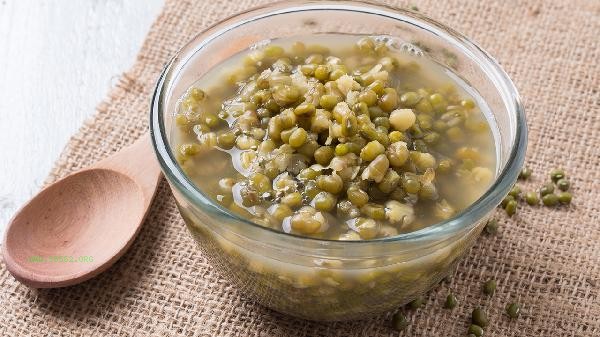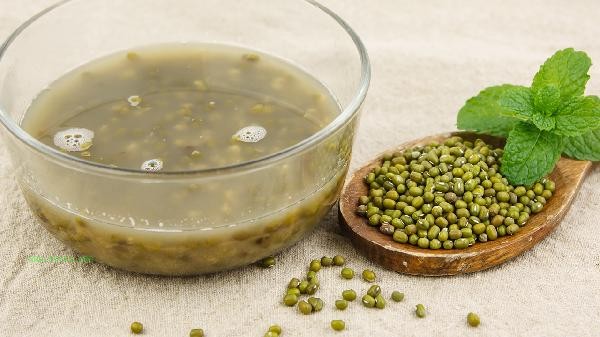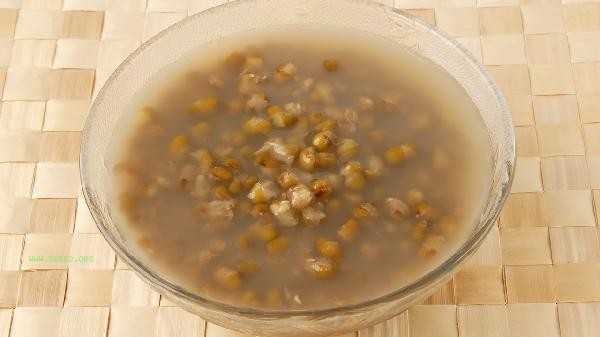The red color of mung bean soup after boiling is mainly related to the oxidation of polyphenolic substances in the mung bean skin. Common reasons include alkaline water quality, iron pot boiling, long boiling time, mung beans stored for too long, and not soaked in advance.

1. Water quality tends to be alkaline
Tap water in northern regions is mostly weakly alkaline, and alkaline environments can accelerate the oxidation and polymerization of polyphenolic substances in mung bean skins, forming red quinone substances. Using pure water or a small amount of white vinegar to adjust the pH value to neutral can maintain the green color of the soup. The water quality has a significant impact on the color of the soup. It is recommended to test the acidity and alkalinity of the water before boiling.
2. Boiling in an iron pot
Iron ions will react with tannic acid in mung beans to form a black substance, while promoting polyphenol oxidase activity. Stainless steel or clay pots can avoid interference from metal ions. If using iron pots, it is recommended to shorten the boiling time and immediately reduce the heat after boiling.
3. Prolonged boiling time
Continuous high temperature boiling for more than 30 minutes can cause a large amount of polyphenolic substances to dissolve and oxidize, gradually turning the soup color from green to red. Control the boiling time over high heat to within 10 minutes, then reduce the heat and hold for 15 minutes. After turning off the heat, promptly remove the mung beans to avoid prolonged soaking.

4. Mung beans stored for too long
Aged mung beans have higher polyphenol oxidase activity in the epidermis, and the loose structure of seed coat cells is prone to releasing pigments. Choose new mung beans from the same year, store them in a sealed and dark place, and freeze them briefly before use to destroy oxidase activity.
5. Untreated
Soaking mung bean skins in cold water for 2 hours can soften them and reduce pigment leakage caused by skin cracking during boiling. Adding a small amount of lemon juice during soaking can inhibit oxidation, and scrubbing to remove peeled seed coat after soaking is more effective. The discoloration of mung bean soup does not affect its nutritional value, and red soup still contains rich B vitamins and dietary fiber. When drinking in summer, mint leaves can be paired to enhance the cooling effect. For those with weak gastrointestinal health, it is recommended to filter the soup before drinking. It is advisable to control the daily intake of 200-300ml, and diabetes patients should pay attention to eating without sugar. If you pursue a green color, you can try boiling mung beans and Job's tears together in a ratio of 2:1, which can stabilize the soup color and enhance its moisturizing effect.









Comments (0)
Leave a Comment
No comments yet
Be the first to share your thoughts!